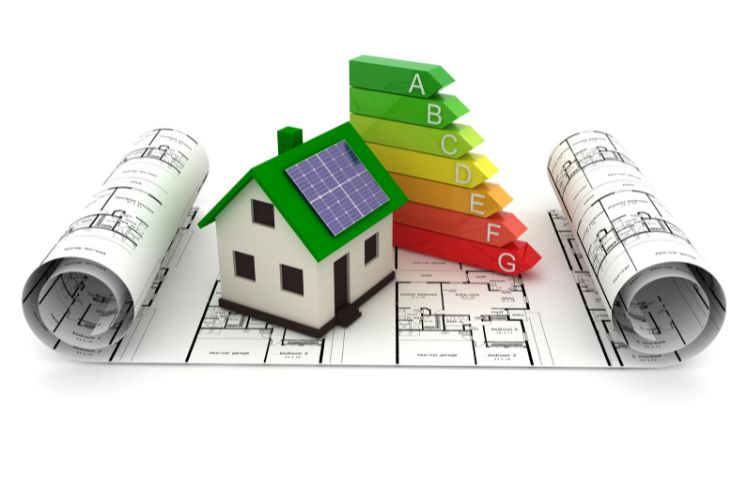When we talk about energy rating or energy label we refer to the document that shows or determines the energy rating obtained for a house or building within a scale from A to G. This ‘grade’ or mark is obtained by a process of energy certification. In our office of architects in Gandía we also work to provide the energy certificate service to our clients.
It may seem that this is not important and that it makes no difference to have an A or G certification, but this is not the case. According to the Environmental Science Association, properties marked in categories A, B and C need to use less energy to maintain a pleasant and comfortable environment inside the home or building than the other categories, i.e. those marked D, E, F and G.
Saving money with an A energy rating
One of the main costs that a property has nowadays is the energy cost and this certificate can mark how energy efficient a property is. And yes, there are measures to improve the energy rating. Right now in Spain the most common rating is E, present in about 42% of the sample surveyed, followed by G rating in 37% of the properties surveyed.
The conclusion that can be drawn is that housing in Spain is not very efficient. For new homes, the certification must necessarily be at A, B or C, but for homes that are already built and used, this is not usually the case. This rating can be improved, and today we are going to tell you how. Going from G to A would require a major renovation and a large investment, but it is possible to achieve some degree of improvement in the measurement scale.
What to do to improve the energy rating
Using ‘green’ technologies
In a household there are many appliances in daily use that can consume more energy and increase the energy rating. It is recommended to replace the appliances that are used the most (such as the washing machine and fridge) with new, more efficient ones. It is also recommended to choose biomass heating and more efficient air conditioning.
Improving thermal insulation
The use of thermal insulation in windows and doors will be reflected in the reduction of energy costs in some cases up to 50%. If you do not currently have this thermal insulation, you can inject insulation into chambers or replace the carpentry with carpentry made of other materials that offer greater protection, such as PVC.
Renovation of facades
As we have talked about before, in fact in our last post on ‘how often to renovate a façade’ you can check it out, having a new or renovated façade will result in energy savings. Using insulating cladding for refurbishment and new façade work will protect and insulate the whole building.
Efficient LED lighting
Another recommendation is the installation of LEDs or low-energy bulbs, as in addition to the economic savings in energy costs, they also protect the environment as they do not contain mercury or materials that are harmful to the atmosphere. This type of lighting emits less CO2 emissions than conventional lights.
To find out how efficient our property is, how to improve your rating, or to request the energy certificate, at Velló Monfort Arquitectes we will be happy to help you.


